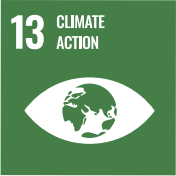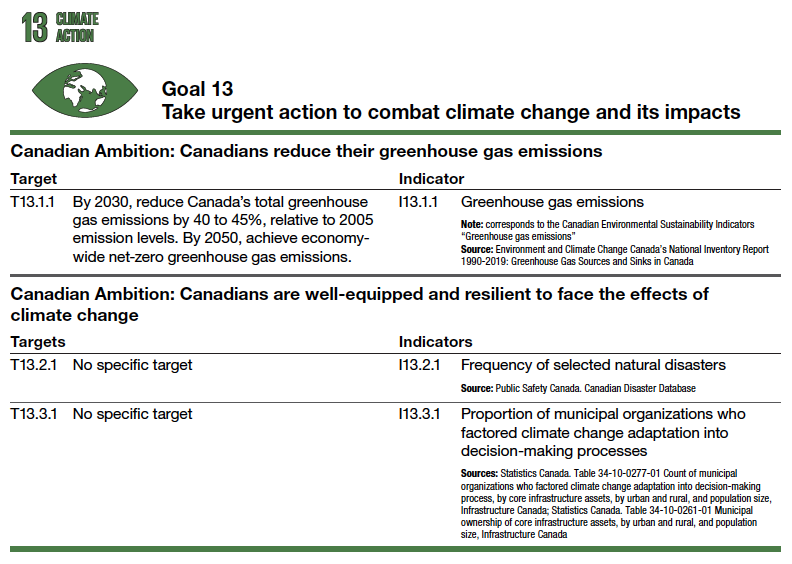Week 8
SDG #13 – Climate Action

Video
Analysis
Earlier in the course we learned the concept of sustainable development was adopted as a shared global concept at the UN 1992 Conference on Environment and Development, commonly known as the Rio Earth Summit. During this conference, three major multilateral environmental agreements were also adopted; the UN Framework Convention on Climate Change, the UN Convention on Biological Diversity, and the UN Convention on Desertification to stop the spread of deserts in the dryland regions of the world.
Twenty years later in 2012, the UN Member States meet again in Rio at the now referred to Rio +20 conference. This 20th anniversary of the Earth Summit brought the realization that the concept of sustainable development had not progressed, and the three environmental agreements on climate, biodiversity, and combating deserts were not being implemented.
The outcomes of the Rio+20 conference saw the mobilization of sustainable development through Agenda 2030, and was the catalyst for the December 12, 2015, signing of the Paris Climate Agreement. The Paris Agreement is centred on SDG #13 and provides a mechanism to implement the UN Framework Convention on Climate Change in a serious way. The Agreement is bound together with the 17 Sustainable Development Goals to stop global warming and human induced climate change.
Climate change is one of the most pressing challenges facing humanity today. The science is conclusive, swift action is needed to reduce greenhouse gases, enhance climate resilience, and protect our natural environment[1]. Carbon dioxide (CO2) levels and other greenhouse gases in the atmosphere rose to new records in 2019, with 2010 – 2019 on record as the warmest decade ever recorded[2]. Climate change is affecting every country on every continent. It is disrupting national economies and affecting lives. Weather patterns are changing, sea levels are rising, and weather events are becoming more extreme2.
Recently we discussed Canadians have one of the highest per capita greenhouse gas emissions globally. When looking at carbon production, or carbon footprints, Canadians also have one of the highest per capita (personal) carbon footprints globally, with particularly high levels for personal transportation, meat consumption, and housing[3].
Urgent action is needed to address the climate emergency. The Paris Agreement aims to strengthen the global response to the threat of climate change by keeping a global temperature rise this century well below 2 degrees Celsius above pre-industrial levels. The agreement also aims to strengthen the ability of countries to deal with the impacts of climate change through appropriate financial flows, technology, and enhanced capacity building including with the Intergovernmental Panel on Climate Change (IPCC). The IPCC is the leading body for the assessment of climate change, established by the World Meteorological Organization (WMO) and the United Nations Environment Programme (UNEP) in 1988, with a mandate to provide internationally coordinated scientific assessments of the magnitude, timing, and potential environmental and socio-economic impact of climate change and realistic response strategies.
Fast Facts
- As of December 2021, 195 countries have joined the Paris Agreement;
- Developed country parties continue to make progress towards the goal of jointly mobilizing $100 billion annually for mitigation actions.
- The Intergovernmental Panel on Climate Change
From the Intergovernmental Panel on Climate Change we know:
- From 1880 to 2012, average global temperature increased by 0.85°C. To put this into perspective, for each 1 degree of temperature increase, grain yields decline by about 5%. Maize, wheat and other major crops have experienced significant yield reductions at the global level of 40 megatons per year between 1981 and 2002 due to a warmer climate;
- Oceans have warmed, the amounts of snow and ice have diminished, and sea level has risen. From 1901 to 2010, the global average sea level rose by 19 cm as oceans expanded due to warming and ice melt;
- The Arctic’s sea ice extent has shrunk in every successive decade since 1979, with 1.07 million km² of ice loss every decade;
- Given current concentrations and on-going emissions of greenhouse gases, it is likely that by the end of this century, the increase in global temperature will exceed 1.5°C. Average sea level rise is predicted as 24 – 30cm by 2065 and 40-63cm by 2100. Most aspects of climate change will persist for many centuries even if emissions are stopped;
- Global emissions of carbon dioxide (CO2) have increased by almost 50% since 1990;
- Emissions grew more quickly between 2000 and 2010 than in each of the three previous decades;
- It is still possible, using a wide array of technological measures and changes in behavior, to limit the increase in global mean temperature to two degrees Celsius above pre-industrial levels, but this window is rapidly closing;
- Major institutional, technological, and behavioural change will be required for global warming to not exceed this threshold.
Why it Matters
Why should I care about taking urgent action to combat climate change and its impacts?
The 2010-2019 decade was the warmest ever recorded, bringing with it massive wildfires, hurricanes, droughts, floods, and other climate disasters across all continents. Climate change is affecting every country in the world. It is disrupting national economies and affecting lives and livelihoods, especially for the most vulnerable. Climate change puts the whole world under pressure, everywhere, at the same time.
Targets and Indicators for Canada
Below is Canada’s approach to measuring progress on SDG #13 – Climate Action. Note the targets and indicators chosen[4].

Recommended Reading
- United Nations. (2021). The Sustainable Development Goal Report, 2020. Take urgent action to combat climate change and its impacts.
- Global Affairs Canada. (2018). Canada’s Implementation of the 2030 Agenda for Sustainable Development: voluntary national review. ↵
- United Nations. (2021). Sustainable Development Goals. ↵
- Hot or Cool Institute. (2021). The 1.5-Degree Lifestyles: Towards A Fair Consumption Space for All. ↵
- Statistics Canada. (2021). The Canadian Indicator Framework for the Sustainable Development Goals - 2021 ↵

